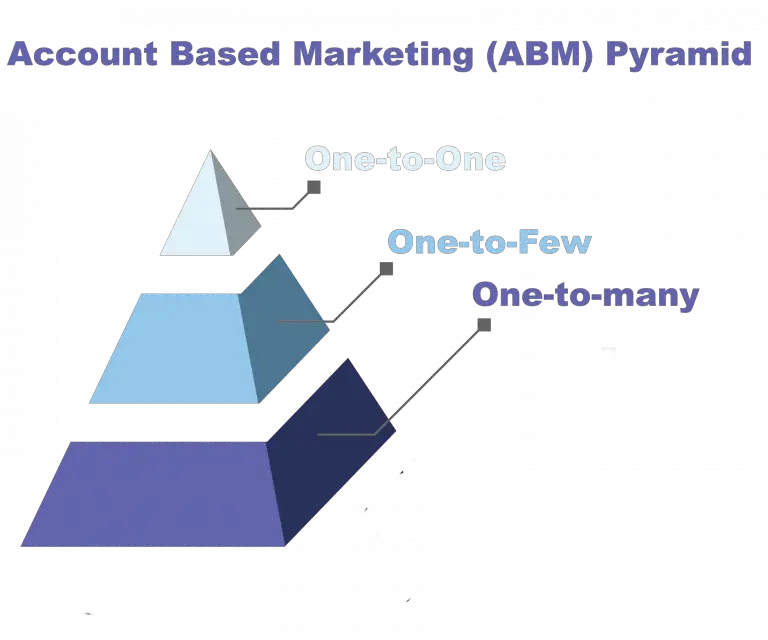Master B2B Marketing Attribution: Best Practices and Tools for Success
B2B marketing attribution has taken the business world by storm due to its undeniable capabilities and efficiency. Thanks to the variety of attribution models it offers, marketing teams can develop different strategies to improve a buyer’s journey.
If you want to know which marketing channels have the most impact, marketing attribution is your answer.
In this article, we’ll go further into detail about B2B marketing attribution, how it works, and what are its challenges. Learn the best ways you can help boost your business’s marketing performance.

What Is B2B Marketing Attribution?
B2B marketing attribution is the process of identifying what touchpoints are relevant in a customer journey to know which techniques and marketing channels are more effective. These touchpoints can include:
- Social media posts
- Blog posts
- Webinars
- Email promotions
- Paid advertisements
- eBooks
Without the use of marketing attribution, it’ll be hard to tell which channels lead to eventual sales or conversion and how much contribution they gave. The more channels marketing teams rely on, the bigger the impact of attribution becomes.
B2B marketing attribution also leads to the visibility of brand message interactions to help identify buyer patterns and trends. With such a powerful tool, marketing teams have more leverage in applying efficient campaign strategies.
Different Types of B2B Attribution
Marketing teams have access to a variety of marketing attribution models to suit different campaign objectives and strategies. These B2B attribution models aren’t one-size-fits-all, so it’s crucial to narrow down their pros and cons before implementing them.
Luckily, the attribution models are categorized into two main classifications for easier distinction. These models are designed to meet the varying needs of marketers and businesses to track and evaluate B2B customer journeys better.
The two main categories are single-touch attribution and multi-touch attribution. Under these categories are the following attribution models:

B2B Single-Touch Attribution Models
Single-touch attribution focuses only on a single marketing touchpoint and assigns 100% of the conversion value or credit to that specific touchpoint. For instance, if an ad promotes a limited-time discount, it only takes one click to gather all the data you need in that potential conversion.
It’s a less complicated model for specific campaigns, but has its drawbacks when it comes to evaluating the bigger picture in a buyer’s journey. The two attributions under this model include:
- First click attribution model: Assigning all the attribution to the first touchpoint that led to eventual customer conversion.
- Last click attribution model: Disregards the initial stages of the buyer’s journey and gives all the credit to the last touchpoint before a conversion occurred.
A prime example of using these models can be found in Google Ads attribution, which mainly utilizes the last click. On the other hand, Facebook ads attribution is more oriented toward the first click for faster interaction.
B2B Multi-Touch Attribution Models
A B2B multi-touch attribution analyzes the buyer journey on a larger scale, giving importance to each touchpoint a customer goes through and how they interact with them.
This attribution allocates credit to all the touchpoints in a customer journey. It also divides the credit according to how impactful each touchpoint was.
These are the different attributions under this category:
- Linear attribution model: Gives equal attribution to all the touchpoints in a buyer’s journey.
- U-shaped position-based attribution model: Allocates 40% attribution to the first and last touchpoints, while dividing the remaining 20% to the channels in between.
- W-shaped attribution model: Assigns 30% attribution to the first, middle, and last touchpoints, while dividing the remaining 10% to the channels in between.
- Time decay attribution model: Grants more attribution value to the most recent touchpoint.

What Are the Benefits of B2B Marketing Attribution?
B2B marketing attribution comes with a lot of benefits that secure a campaign’s success while also identifying points for improvement. Knowledge is an important tool in business, so the more data is gathered for evaluation, the better marketing strategies can improve.
Here are some of the most notable benefits of B2B marketing attribution:
Identifies Which Marketing Channels Have More Impact
The beauty of B2B marketing attribution is that even if a certain campaign fails, there’s enough data to gather for improvement. Additionally, a marketing team can identify which channels are effective.
This analysis method helps keep up with trends and implement additional strategies, such as incorporating paid search or boosting organic search. It’s easier to understand buyer needs, intent, and bigger-picture behavior with the help of B2B marketing attribution.
Optimizes Budget Use for Marketing Strategies
Sometimes marketing teams have limited allocated budgets for campaigns, which is why strategic planning is a must. The answer to this concern lies in B2B marketing attribution.
This B2B approach allows for a smarter budget allotment across multiple touchpoints. For example, if the data indicates a marketing channel to be more impactful than another, marketers can shift the budget in favor of the better channel.

Personalizes a Prospect’s Buying Journey
Each buyer has different wants, needs, behavior, and intent. Without the help of marketing attribution, these concerns will be hard to track, along with other trends and patterns.
Marketing attribution helps cater to these needs and provides a more personalized buying journey. This engagement benefits both the marketing team and the prospects.
What Are the Challenges of B2B Marketing Attribution?
As much as B2B marketing attribution is essential for developing personalized marketing strategies, its models are far from perfect. There are certain challenges to overcome before a marketing team can successfully incorporate any of the attribution models.
What we see from the data gathered by attribution doesn’t always equate to reality. That said, developing a fitting and strategic approach for data gathering and evaluation is necessary.
You might encounter the following challenges in B2B marketing attribution:
- Data discrepancies across platforms due to different configurations
- Short and long-term optimization of the strengths and weaknesses of various touchpoints
- Designing strategic procedures for evaluating data and how to incorporate them to boost marketing performance
- Applying digital marketing strategies to offline attribution
What Is Account-Based Marketing Attribution?
Account-based marketing (ABM) attribution focuses more on smaller groups of accounts instead of the entire market as a whole. This B2B marketing strategy utilizes hand-picked prospects to develop personalized touchpoints or channels.
While marketing attribution is necessary for gathering a larger scale of buyers, it’s account-based attribution that allows marketing teams to dig deeper and closer to reality. After all, an account-level analysis also plays a vital role in understanding a campaign’s efficiency.
The only downside to this marketing campaign is that it costs more due to the utilization of personalized assets. That’s why ROI tracking is crucial to ensure your marketing spending is used properly—down to the last cent.

How to Improve B2B and Account-Based Marketing Attribution
Since both B2B and account-based marketing attributions come with a few challenges, a little tweaking is necessary at times to increase efficiency.
Just because an attribution model specifies a traditional method or procedure doesn’t mean you always have to follow it down to the last detail.
Here’s how you can add to the success of B2B and account-based marketing attribution:
- Incorporate an ROI tracking system that fits your business
- Relate multiple touchpoints together to ensure everything adds up
- Keep track of every conversion and leads that didn’t result in one
- Ask for feedback directly from customers and non-customers
- Reculture marketing teams when switching between B2B and ABM
Conclusion
Behind the success of every campaign is an efficient B2B marketing attribution model. You can’t lead a prospect to eventual conversion without understanding their buying journey and how it correlates to their needs and behavior.
Whichever model fits your business best, you must study it thoroughly and think of ways to implement it in your favor. It can be an intimidating and complex process at times, but the rewards are worth it when it comes to fruition.

Sascha is a Lifecycle Marketing Consultant with over 8 years of digital marketing experiences in Silicon Valley, the UK, and Germany.
After leading the demand generation for a 100+ million company, he decided to venture out on himself. He’s now helping clients to attract and convert more leads and customers.
His main focus are SEO, paid media & marketing automation – all with the focus to tie marketing campaigns to revenue.
Sascha has been featured in industry publications.



